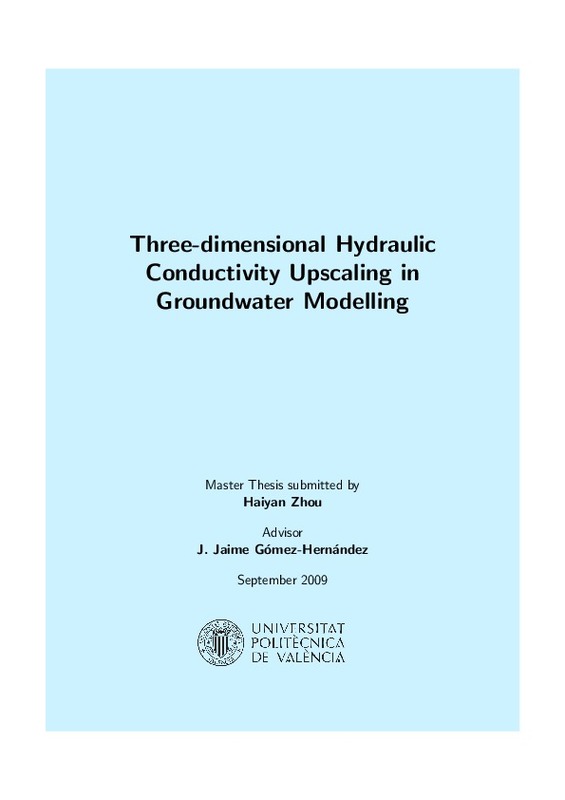|
Resumen:
|
Groundwater numerical simulation is a tool nowadays routinely used in water resources evaluation. The accuracy of groundwater flow and transport simulations relies very much on the ability to properly characterize the ...[+]
Groundwater numerical simulation is a tool nowadays routinely used in water resources evaluation. The accuracy of groundwater flow and transport simulations relies very much on the ability to properly characterize the spatial variability of hydraulic conductivity. One of the problems that this characterization faces is the disparity between the sample support and the support used in the discretization of the numerical model. While it is possible to generate realizations of conductivity at the measurement support scale, it is too demanding to perform numerical simulations with such a level of discretization. The need to change of support calls for upscaling techniques. We refer to the scale at which hydraulic conductivity can be characterized as the fine scale, and the scale of the numerical discretization as the coarse scale.
This thesis proposes a three-dimensional hydraulic conductivity upscaling algorithm geared to its use with a finite difference code. Because finite difference codes use the interblock conductivity to compute the groundwater flow between blocks, the algorithm aims at computing the hydraulic conductivity representative of the volume between block centres as direct input to the groundwater flow solver, thus avoiding unnecessary averaging rules between neighboring block conductivities. This is particularly important since at the coarse scale hydraulic conductivities will, in general, have to be represented by full tensors, and the averaging of tensors is not a trivial task. The anisotropic spatial correlation of the hydraulic conductivities at the fine scale, even when these conductivities are considered isotropic at this scale, will induce flow anisotropy at coarser scales.
Determining the interblock upscaled conductivity tensor is done by isolating the fine scale hydraulic conductivities that make up the interblock of interest plus a sufficiently large skin surrounding it, and then solving the groundwater flow equation using several boundary conditions. The symmetric 3D tensor that is capable to best reproduce the average fluxes through the interblock, given the average hydraulic head gradient, for the different boundary conditions is computed by a simple optimization and retained as the interblock conductivity tensor at the coarse scale.
The algorithm has been verified in three synthetic experiments. Hydraulic conductivity at the small scale is considered isotropic to flow in all cases, but displaying different spatial heterogeneity: isotropic spatial correlation, anisotropic correlation, and a sand/shale distribution. In all three cases the upscaled models reproduce very well the average flows between blocks as computed at the fine scale. The speed of the algorithm depends very much on the size of the skin selected to perform the small scale simulations to determine each of the interblock conductivity tensor. The larger the skin, the better the final reproduction of the average flows; however, we found that a skin about half the size of the upscaling block gives good results in the three examples.
[-]
|







